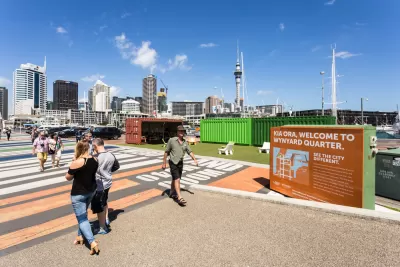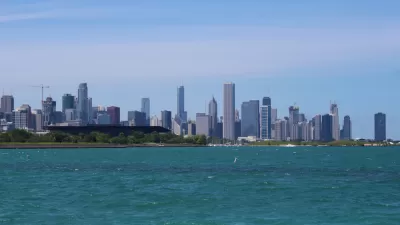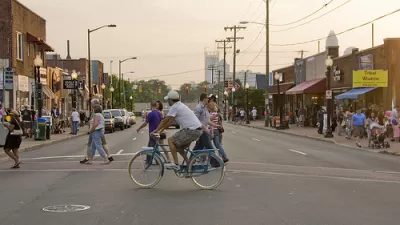The New Zealand Transport Agency’s new report, "Transport Impacts on Wellbeing and Liveability" provides guidance for transportation planning that achieves fairness, neighborliness, respect, community identity, pride, fitness, and health.

In 2019 the New Zealand Government produced its first Well-Being Budget which is designed to achieve broad national well-being goals. The New Zealand Transport Agency’s new report, "Transport impacts on wellbeing and liveability," provides guidance for developing a transport system that helps achieve these goals.
Below are definitions used in New Zealand’s Well-Being Budget:
Well-Being is when people are able to lead fulfilling lives with purpose, balance and meaning to them. Giving more New Zealanders capabilities to enjoy good well-being requires tackling the long-term challenges we face as a country, like the mental health crisis, child poverty and domestic violence. It means improving the state of our environment, the strength of our communities and the performance of our economy.
Livability refers to the environmental and social quality of an area as perceived by residents, employees, customers and visitors. This includes safety and health (traffic safety, personal security and public health), local environmental conditions (cleanliness, noise and air quality), the quality of social interactions (neighbourliness, fairness, respect, community identity and pride), opportunities for recreation and entertainment, aesthetics and existence of unique cultural and environmental resources (eg historic structures, mature trees and traditional architectural styles).
The report also includes analysis of how transportation affect Hauora, a Māori view of health which covers the physical, mental, social and spiritual well-being.
The report concludes that transport has a significant effect on well-being, particularly local transport initiatives that affect how people move around in their local community. The benefits of walking and active transport are well documented, and designing communities to facilitate movement using active transport modes has major benefits for well-being. This is not just in terms of physical health, but also in terms of the increased connectedness between people in communities facilitated by active transport modes. Where active transport modes are more available, there are more interactions between those living in that community.
The concept of livability highlights that the design of the community spaces has a significant impact on transport modes and the transport corridors that the transport options utilize. Understanding these links is important if the benefits that can come from shifts in transport utilization are to be achieved.
The study recommends replacing conventional transportation economic analysis with contribution analysis, which analyzes the many impacts resulting from a policy or project. The report explores how transport agencies can apply this approach to evaluating policies and programmes, and the data needed to apply such analysis.
[Ed's note: AP style chooses the hyphenated "well-being" as the authoritative spelling for this term. The AP also chooses "livability" over "liveability." New Zealand clearly went a different direction with the title of this report.]
FULL STORY: Transport Impacts on Wellbeing and Liveability

Rethinking Redlining
For decades we have blamed 100-year-old maps for the patterns of spatial racial inequity that persist in American cities today. An esteemed researcher says: we’ve got it all wrong.

Montreal Mall to Become 6,000 Housing Units
Place Versailles will be transformed into a mixed-use complex over the next 25 years.

Planetizen Federal Action Tracker
A weekly monitor of how Trump’s orders and actions are impacting planners and planning in America.

Santa Clara County Dedicates Over $28M to Affordable Housing
The county is funding over 600 new affordable housing units via revenue from a 2016 bond measure.

Why a Failed ‘Smart City’ Is Still Relevant
A Google-backed proposal to turn an underused section of Toronto waterfront into a tech hub holds relevant lessons about privacy and data.

When Sears Pioneered Modular Housing
Kit homes sold in catalogs like Sears and Montgomery Ward made homeownership affordable for midcentury Americans.
Urban Design for Planners 1: Software Tools
This six-course series explores essential urban design concepts using open source software and equips planners with the tools they need to participate fully in the urban design process.
Planning for Universal Design
Learn the tools for implementing Universal Design in planning regulations.
City of Camden Redevelopment Agency
City of Astoria
Transportation Research & Education Center (TREC) at Portland State University
Regional Transportation Commission of Southern Nevada
Toledo-Lucas County Plan Commissions





























